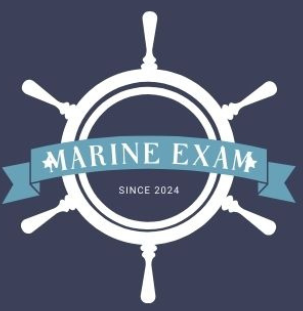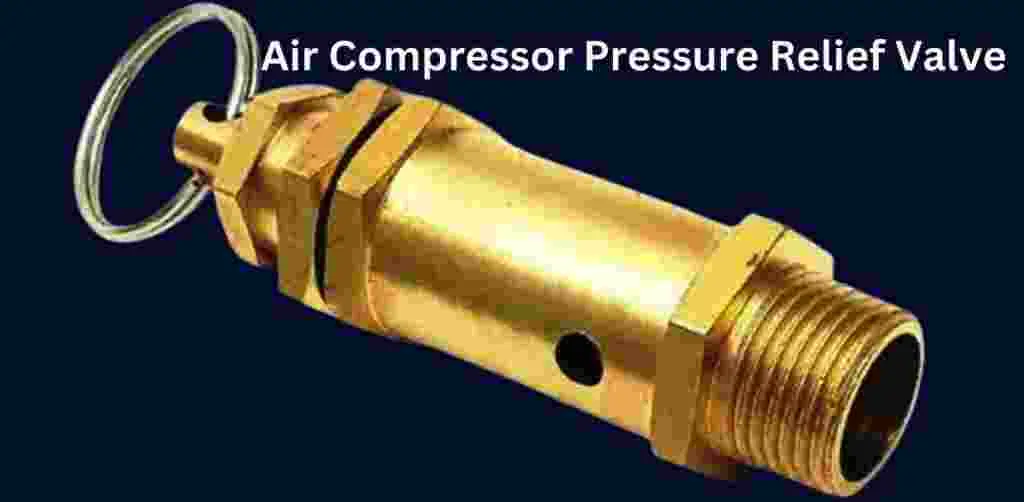Air Compressor Pressure Relief Valve
In marine applications, pressure relief valves play a critical role in maintaining the safety and efficiency of air compressor systems. These valves protect marine machinery from over-pressurization, which can lead to severe damage or even catastrophic failures in demanding ocean environments. In this post, we’ll dive into everything you need to know about air compressor pressure relief valves—from their purpose and operation to common issues and how to select the best valve for your marine compressor.
As we move into 2025, the importance of understanding these valves grows even more pressing. New advancements in compressor technology are driving industry standards higher, and updated marine safety regulations mean that choosing the right valve has never been more crucial. Let’s explore why these valves are indispensable for marine machinery and how you can ensure your systems meet the latest safety and performance standards.
What is a Pressure Relief Valve?
A pressure relief valve is a safety device essential for protecting air compressor systems from excessive pressure buildup. In marine applications, it serves as a critical component in ensuring safety and reliability, releasing excess pressure to prevent potential equipment failure or hazardous situations onboard. Given the unique challenges of the marine environment—including high humidity, salt exposure, and demanding operational conditions—marine-grade pressure relief valves are specifically designed to withstand these elements.
Definition and Purpose in Marine Settings
In marine settings, pressure relief valves prevent air compressor systems from reaching dangerous pressure levels that could compromise safety. Ships and marine vessels rely on compressors for numerous tasks, from powering pneumatic tools to supplying essential air systems. Due to the high pressures and corrosive environment at sea, these valves are constructed to handle intense and sustained pressure levels and to resist saltwater corrosion, ensuring safe, continuous operation aboard vessels.
Safety Standards in Marine Applications
Marine environments operate under stringent safety standards set by organizations such as the International Maritime Organization (IMO) and the American Bureau of Shipping (ABS). These standards require that marine pressure relief valves meet specific requirements for pressure thresholds, corrosion resistance, and reliability. Compliance with these regulations is mandatory to ensure that vessels are safe for operation and able to manage critical systems effectively.
Components and Operation
A typical pressure relief valve is composed of three main parts: the spring, the seal, and the valve body. The spring is calibrated to open the valve once a specific pressure threshold is reached, allowing excess air to escape. The seal prevents leakage under normal conditions, and the valve body is designed to be durable and corrosion-resistant, essential for withstanding marine pressures and salty conditions. This robust construction is crucial for maintaining reliable operation under extreme environmental stresses, making pressure relief valves indispensable for marine air compressor systems.
Common Causes of Air Compressor Relief Valve Failure
Air compressor relief valves are essential for marine safety, but they can face unique stressors in marine environments that may lead to failure. Understanding these causes is key to maintaining reliable operation on board.
Environmental Stress
In marine environments, relief valves are constantly exposed to saltwater, humidity, and extreme temperature fluctuations. Saltwater exposure can cause corrosion, compromising the valve’s ability to function correctly. Over time, this leads to rust and material degradation, especially in components that aren’t marine-grade. The high humidity at sea can also increase the risk of corrosion, affecting the internal workings of the valve. To combat these stresses, marine PRVs are typically made from corrosion-resistant materials, but they still require regular monitoring and maintenance.
Mechanical Wear
Continuous operation in a marine setting places considerable mechanical stress on PRV components. The springs and seals within the valve undergo repeated compression and decompression cycles, which, over time, can lead to wear and fatigue. Additionally, the harsh vibrations and movements of the vessel itself can accelerate mechanical wear. This gradual deterioration can reduce the valve’s ability to hold pressure at safe levels, increasing the risk of failure.
Preventative Maintenance
Preventative maintenance is essential for extending the life of air compressor relief valves and ensuring their reliability. Regular inspections should focus on checking for corrosion, testing the spring tension, and examining seals for wear. Marine engineers are advised to replace parts like seals and springs according to manufacturer recommendations and consider environmental conditions that may accelerate wear. A proactive maintenance schedule can help mitigate the unique risks faced in marine environments, reducing the likelihood of unexpected PRV failures and ensuring that compressors operate safely and efficiently.
3. Understanding Air Compressor Relief Valve Opening
- Opening Mechanism: Describe how the pressure relief valve opens to release excess pressure, with an emphasis on the role of consistent airflow on a vessel.
- Frequency of Opening in Marine Applications: Detail how marine compressors, often used in more demanding conditions, may require frequent pressure relief.
- Indications of Proper vs. Improper Functioning: Guide on recognizing signs of functional versus problematic opening, focusing on safe marine compressor operation.
Selecting the Right Pressure Relief Valve
Choosing the right pressure relief valve (PRV) is essential for maintaining safe and reliable air compressor operation in marine environments. Marine applications require valves that can withstand harsh conditions, provide accurate pressure control, and meet regulatory standards. Here’s a guide on what to consider when selecting a PRV for marine air compressors.
Material Selection for Marine Conditions
Marine environments expose equipment to saltwater, high humidity, and temperature fluctuations, so selecting corrosion-resistant materials is crucial. Stainless steel and brass are commonly used for marine PRVs due to their durability and resistance to rust and corrosion. Stainless steel, in particular, offers high strength and excellent resistance to saltwater exposure, making it ideal for continuous use in challenging marine conditions.
Pressure Rating and Sizing
Choosing the correct pressure rating and valve size is essential for the PRV to perform reliably and safely. The pressure rating should align with the specific needs of the air compressor, factoring in ship type, compressor size, and operational pressures. Proper sizing ensures that the valve can handle the required flow rate without under- or over-performing, which could lead to premature wear or inadequate pressure control.
Compliance with Marine Standards
Marine applications are subject to stringent safety and performance standards, including regulations from the Safety of Life at Sea (SOLAS) convention. Compliance with these standards is necessary to ensure safety and regulatory approval. Selecting PRVs that meet SOLAS or similar marine certifications ensures they are designed to perform under marine-specific conditions and are acceptable for use on vessels worldwide.
Maintenance Needs
In the confined and often challenging spaces on ships, PRV maintenance should be as simple and accessible as possible. Look for valves that are designed with easy-to-access components and low-maintenance materials. Regular inspection routines are crucial, and selecting PRVs with fewer parts or tool-free maintenance options can streamline upkeep. Durable materials and straightforward designs can reduce maintenance frequency and help maintain reliable performance in limited spaces.
Tips for Maintaining Relief Valves
Regular maintenance is essential to ensure the longevity and reliability of pressure relief valves (PRVs) in marine environments. Here are some practical tips for maintaining marine compressor relief valves and minimizing the risks of unexpected failures.
Inspection Schedule
Creating and following a regular inspection schedule is crucial for identifying potential issues early on. For marine applications, a typical schedule involves:
- Weekly Visual Inspections: Check for signs of corrosion, rust, or salt buildup on external components.
- Monthly Functional Tests: Verify that the valve opens and closes smoothly at its designated pressure setting.
- Quarterly Detailed Inspections: Remove the valve for a thorough inspection, checking the interior for any wear, corrosion, or buildup, and clean as needed.
- Annual Overhaul: Consider a comprehensive inspection and calibration to ensure the valve is operating precisely within safety specifications. Adjust the schedule based on the vessel’s workload and environmental conditions.
Replacement Parts for Marine Use
Marine PRVs require specialized parts designed to withstand harsh conditions. Corrosion-resistant components, such as stainless steel or brass springs and seals, are ideal for marine use. These materials offer enhanced durability against saltwater exposure and reduce the risk of component failure. When replacing parts, it’s essential to use only marine-grade, OEM-approved replacements to maintain safety and compliance with marine standards.
Best Practices for Longevity
To prolong the life of PRVs in saltwater environments:
- Use Anti-Corrosion Coatings: Apply protective coatings to exposed parts to prevent rust and corrosion.
- Store Spare Parts Onboard: Keep a supply of commonly replaced components like seals and springs for quick repairs if needed.
- Reduce Salt Buildup: Regularly clean valves to prevent salt accumulation, which can wear down seals and lead to corrosion.
FAQs on Air Compressor Pressure Relief Valve
Q1: What does a pressure relief valve do on an air compressor?
A: It releases extra pressure to prevent over-pressurization and potential damage.
Q2: How can I increase the pressure on my air compressor?
A: Turn the adjustment screw clockwise to raise pressure and counterclockwise to lower it. Be sure the compressor is off and the tank is empty.
Q3: What are the basic requirements for a pressure relief valve?
A: The valve should reseat securely and be easily accessible for calibration or replacement.
Q4: How do I determine the correct size for a pressure relief valve?
A: Use the formula: Relief Pressure = Set Pressure + Overpressure.
Conclusion
Choosing and maintaining the correct pressure relief valve is essential for the safety and efficiency of marine air compressor systems. A well-selected valve protects against over-pressurization, withstands the demanding marine environment, and meets regulatory standards. Regular inspections, use of corrosion-resistant components, and adherence to an effective maintenance schedule can help marine operators extend the lifespan of these valves and reduce the risk of costly failures.
For marine operators, diligence in maintenance and strict compliance with marine standards are key to keeping air systems running smoothly. As we move into 2025, we anticipate continued advancements in corrosion-resistant materials and enhanced regulatory standards, such as updates from SOLAS, to further emphasize onboard safety. Staying updated on these trends will help operators make informed decisions when selecting and maintaining pressure relief valves, ensuring safety and reliability in the years to come.

